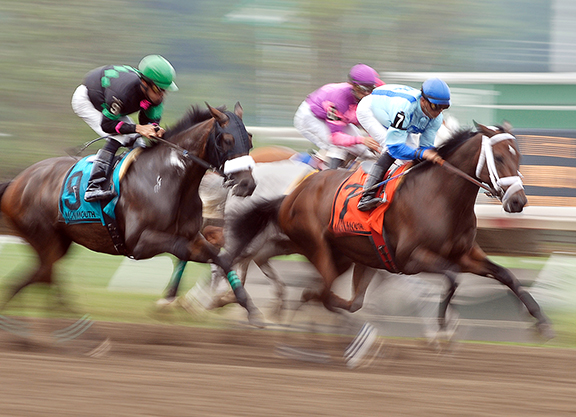In data released by The Jockey Club's Equine Injury Database for 2019, the rate of fatal injury for Thoroughbreds last year dropped to 1.53 per 1,000 starts from a rate of 1.68 in 2018. It was the first time the rate has decreased since 2016, and overall the fatality rate is down 23.5% from the 10-year high of 2.0 per 1,000 starts in 2009. Based on the data, 99.84% of flat racing starts at racetracks that participated in the EID occurred without a fatality. A graph depicting all updated statistical data pertaining to surface, distance and age is available here.
Per surface, the fatality rates in 2019 were 1.60 per 1,000 starts for dirt races, 1.53 for turf races and 0.93 for synthetic races. On dirt, there was a 14.2% drop in the rate from 2018 and overall there has been a 24.1% drop in dirt racing since 2009. Fatalities in turf races increased by 30%, while overall there has been a 19.6% drop in the fatality rate for turf races since 2009. On synthetic tracks, the rate dropped below 1.0 for the first time since annual summaries were first reported in 2009.
“Although the incidence of racing fatalities on dirt surfaces reached an all-time low in 2019 of 1.60, the results on turf increased from 1.20 in 2018 to 1.56 in 2019. The number of starts on turf has been trending upward and this increase in fatalities likely indicates a set of risk factors unique to turf racing may be driving the results,” said Dr. Tim Parkin, Professor of Veterinary Epidemiology at the University of Glasgow. “Understanding the factors that contribute to increased risk of fatality is a continuous pursuit, one that would benefit tremendously from reporting data on injuries to horses that occur during morning training hours.”
“The 23.5% reduction in fatal injuries since 2009 indicates that the Thoroughbred industry's commitment to equine safety is paying dividends,” said Kristin Werner, senior counsel of The Jockey Club. “Capturing injury data from morning training hours at racetracks as well as data related to treatments and procedures would greatly improve the precision of our risk models, increasing the ability of racetrack personnel to identify horses at risk even before they hit the entry box.”
Since March 2012, racetracks have been able to voluntarily publish their statistics from the EID on The Jockey Club website. The 27 tracks that self-reported in 2019 had a slightly higher incidence of fatality (1.53) than non-self-published (1.52) across all surfaces.
Racetracks accredited by the National Thoroughbred Racing Association (NTRA) Safety and Integrity Alliance had a lower incidence of fatality per 1,000 starts versus non-accredited tracks across all surfaces (1.46 vs. 1.59).
Colonial Downs had the lowest fatality rate among reporting tracks with over 1,000 starters, with no fatalities from 1,145 starters. The Fresno County Fair had its sixth consecutive year with a 0.00 rate, this year from 358 starters. The Sacramento Fair had its third perfect year, with 0.00 fatalities from 404 starters. Presque Isle was 0.34, from 5,829 starters. Del Mar has seen declines in three straight years, and reported a 0.62 rate in 2019. Golden Gate was right behind them with 0.64. Aqueduct at .81 rounds out the tracks who came in at under 1.00.
Short races of fewer than six furlongs have consistently been associated with the greatest incidence of racing fatality. In addition, 2-year-olds again had the lowest rate of catastrophic injuries compared to 3-year-old and older horses.
The list of racetracks participating in the Equine Injury Database and detailed statistics from those tracks that voluntarily publish their results can be found here.
Throughout the course of 2020, 111 racetracks accounting for approximately 99% of flat racing days are expected to contribute data to the EID.
Not a subscriber? Click here to sign up for the daily PDF or alerts.






